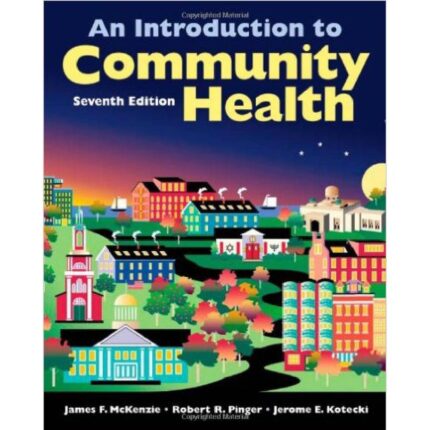Principles And Labs For Fitness And Wellness 12th Edition By Hoeger – Test Bank
Multiple Choice
LO# An. Question
1 b 11. The most prevalent degenerative disease(s) in the U.S. is (are):
a. Alzheimer’s disease.
b. cardiovascular diseases.
c. chronic diseases.
d. Parkinson’s disease.
1 b 12. The fourth-leading cause of death in the United States is:
a. CHD.
b. stroke.
c. CVD.
d. cancer.
1 a 13. Approximately half of all deaths from cardiovascular disease are caused by:
a. CHD.
b. stroke.
c. CVD.
d. cancer.
1 b 14. Almost half of heart disease deaths occurred outside of the hospital, most likely because:
a. people could not reach a hospital that has an emergency department.
b. people failed to recognize early warning symptoms of a heart attack.
c. the EMTs could not transport the patients to the hospital fast enough.
d. there are not enough well-equipped hospitals in the patients’ communities.
1 d 15. The major form of cardiovascular disease is:
a. cerebral vascular disease.
b. congenital heart disease.
c. congestive heart failure.
d. coronary heart disease.
1 b 16. According to CDC estimates, if all deaths from the major cardiovascular diseases were eliminated, life expectancy in the United States would increase by:
a. about 5 years.
b. about 7 years.
c. at least 8 years.
d. at least 10 years.
2 c 17. The most important CHD determinant is:
a. genetic inheritance.
b. high blood pressure.
c. personal lifestyle.
d. tension and stress.
4 b 18. After completing Lab 11A (Self-Assessment Coronary Heart Disease Risk Factor Analysis), John discovers that his score is in the “Moderate” CHD risk category. This means that John:
a. is taking good care of his cardiovascular health and does not need to improve it.
b. can definitely improve his lifestyle to lower his risk for these diseases.
c. has a strong probability of developing heart disease within the next few years.
d. needs to implement a personal risk-reduction program immediately.
4 d 19. The immediate implementation of a personal risk-reduction program is required for individuals whose CHD risk assessment score is in the _____ category.
a. very low
b. low
c. moderate
d. high
2 d 20. CHD risk is reduced by all of the following EXCEPT:
a. smoking cessation.
b. blood pressure under 120/80.
c. LDL below 100 mg/dL.
d. HDL below 40 mg/dL.
4 a 21. Which of the following indicates the greatest risk for CHD?
a. very high LDL cholesterol and low HDL cholesterol levels
b. very low LDL cholesterol and low HDL cholesterol levels
c. very high LDL cholesterol and high HDL cholesterol levels
d. very low LDL cholesterol and high HDL cholesterol levels
4 d 22. According to the CHD risk analysis, having _____ seems to be the best predictor for developing coronary heart disease.
a. excessive body fat
b. high blood glucose
c. a family history of CHD
d. an unhealthy diet
2 c 23. Daily physical activity and aerobic exercise help control most of the major risk factors that lead to heart disease by:
a. increasing blood lipids and triglycerides.
b. improving low-density lipoprotein cholesterol.
c. increasing cardiorespiratory endurance.
d. increasing low-grade (hidden) inflammation.
2 b 24. Which of the following is INCORRECT regarding CVD risk reduction?
a. Moderate-intensity physical activity provides substantial benefits in terms of overall cardiovascular risk reduction.
b. Regular physical activity and aerobic exercise by themselves guarantee a lifetime free of cardiovascular problems.
c. Vigorous-intensity activity is preferable because of greater improvements in aerobic fitness and glucose control.
d. Overall management of risk factors is the best guideline to lower the risk for cardiovascular disease.













Reviews
There are no reviews yet.